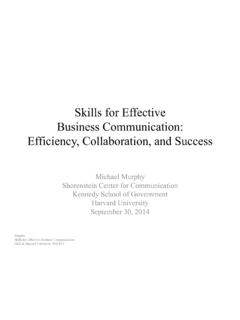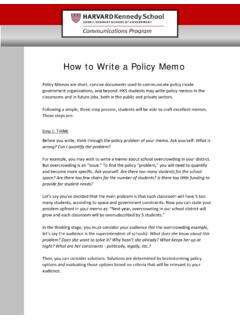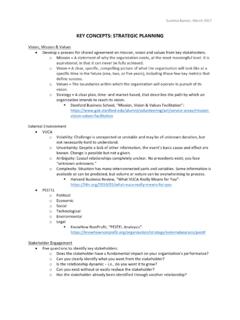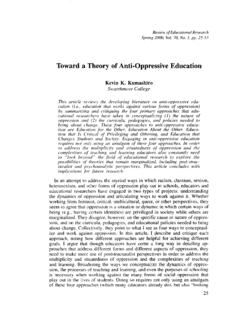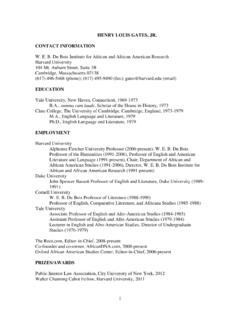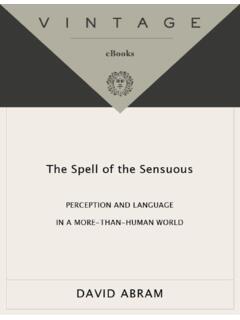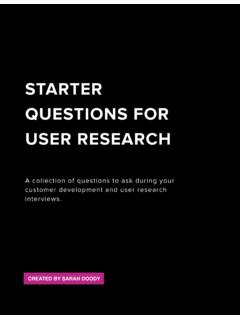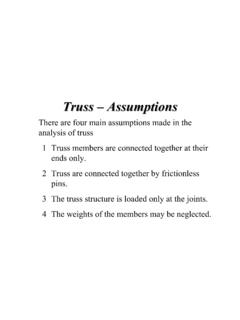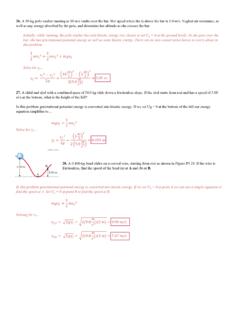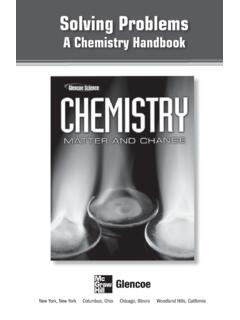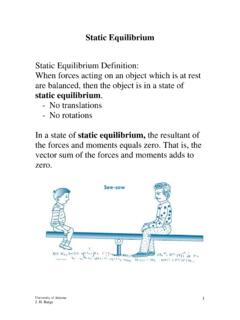Transcription of Solving the Trolley Problem - Harvard University
1 A Companion to Experimental Philosophy, First Edition. Edited by Justin Sytsma and Wesley Buckwalter. 2016 John Wiley & Sons, Ltd. Published 2016 by John Wiley & Sons, Ltd. The Trolley Problem has baffled ethicists for decades (Foot 1978; Thomson 1985; Fischer and Ravizza 1992) and has, more recently, become a focal point for research in moral psychology (Petrinovich, O Neill, and Jorgensen 1993; Greene et al. 2001; Edmonds 2013; Greene 2015). As the Trolley Problem s interdisciplinary history suggests, it is actually two closely related prob-lems, one normative and one descriptive. The empirical research paper reprinted here (Greene et al. 2009) presents an approximate solution to the descriptive Trolley Problem . What s more, it may provide essential ingredients for Solving or dissolving the normative Trolley the uninitiated, the Trolley Problem arises from a set of moral dilemmas, most of which involve tradeoffs between causing one death and preventing several more deaths.
2 The descriptive Problem is to explain why, as a matter of psychological fact, people tend to approve of trading one life to save several lives in some cases but not others. Consider the two most widely discussed cases (Thomson 1985): People responding to the standard switch case ( bystander) tend to approve of hitting a switch that will redirect a Trolley away from five and onto one. By contrast, people responding to the standard footbridge case tend to disapprove of pushing one person off a footbridge and in front a Trolley , killing that person but saving five further down the track. The normative Problem is to explain when and why we ought to approve of such one for many trad-eoffs. The longstanding hope is that a solution to the normative Trolley Problem will reveal gen-eral moral principles.
3 Such principles, in turn, may apply to challenging, real world moral problems such as those encountered in the domains of bioethics (Foot 1978; Kamm 2001), war (McMahan 2009), and (most recently) the design and regulation of autonomous machines such as self driving cars (Wallach and Allen 2008).The normative and descriptive Trolley Problems are closely related. The normative Trolley Problem begins with the assumption that our natural responses to these cases are generally, if not uniformly, correct. Thus, any attempt to solve the normative Trolley Problem begins with an attempt to solve the descriptive Problem , to identify the features of actions that elicit our moral Solving the Trolley ProblemJOSHUA D. 1752/26/2016 5:08:42 PMJOSHUA D. GREENE176approval or disapproval. Once such features have been identified and we turn toward normative questions, there are two general possibilities.
4 First, we might find that the features to which our judgments are sensitive also appear, upon reflection, to be features to which they ought to be sensitive. Under these happy circumstances, the normative Problem is essentially solved. Here, we simply reconfigure our descriptive psychological principles as normative moral principles (Mikhail 2011 ). For example, we translate People judge the action to be morally acceptable if and only into, The action is morally acceptable if and only A philosophy thus supported would not be proven correct from first principles. Instead, it would sway comfortably in the hammock of reflective equilibrium, sup-ported by a network of considered judgments (Rawls 1971 ). The second, more discomfiting possibility is that a better understanding of moral psychology will prompt us to reconsider many of our considered judgments.
5 More specifically, science may teach us that some of our judgments are sensitive to features that, upon reflection, do not seem to matter morally. Likewise, we may find that our judgments are insensitive to moral features that, upon reflection, do seem to matter morally. Under these more complicated circumstances, a scientific understanding of moral judgment creates a Problem and a corresponding opportunity. By moving some of our judgments out of the reliable box and into the unreliable box, we may find that the ones remaining in the reliable box point to new conclusions. (Or to old conclu-sions that have been widely dismissed.) Elsewhere I have argued that a better understanding of moral psychology favors utilitari-anism/consequentialism in precisely this way (Greene 2013 ).
6 My claim is not that one can derive moral oughts from the is of psychological science. Rather, the claim is that a scientific under-standing of our judgments can reveal latent tensions within our preexisting set of oughts, and thus redirect our normative thinking toward a double wide reflective equilibrium (Greene 2014 ) conclusions reached by incorporating scientific self knowledge into our reflective moral theorizing. I will not defend my defense of utilitariamism/consequentialism here. Instead, my point is simply to explain how, in the most general terms, the research paper reprinted here fits into a larger project in normative ethics. As noted earlier, the research described here provides an approximate descriptive solution to the Trolley Problem . More specifically, this research highlights the influence of two factors that exert a powerful influence when both are present.
7 First, we are more likely to disapprove of harm-ful actions that involve the application of personal force roughly, cases in which the agent pushes the victim. Second, we are more likely to disapprove if the harm is intended as a means to the agent s goal, and is not merely a foreseen (or unforeseen) side effect. From a normative perspective, the personal force factor is notable because it s not one that we ordinarily regard as morally relevant. Were a friend to call you from a set of Trolley tracks seeking moral advice, you would probably not say, Well, that depends. Would you have to push the guy, or could you do it with a switch? The second factor, the means/side effect factor, has a long and distinguished philosophical history (Aquinas 2006 ). But, as I argue elsewhere (Greene 2013 ), the hallowed doctrine of double effect may also be viewed with suspicion once its psychological origins are properly understood.
8 Our sensitivity to the means/side effect distinction may simply reflect the limitations of our cognitive architecture rather than a deep moral truth. As noted earlier, the psychological theory presented in the article reprinted here is only an approximation. It s a good start, explaining much of the variability in mean ratings across the most widely discussed cases. What s more, as of this writing, I know of no theory that fits the data better. Nevertheless, several results tell us that this theory is incomplete. First, the combination of the personal force factor with the means/side effect factor is not enough to explain the entire pattern observed in the article that follows (More specifically, it does not explain why loop 1 is different from remote footbridge and footbridge switch.)
9 Nor does it explain why 1762/26/2016 5:08:42 PMSOLVING THE Trolley PROBLEM177obstacle push is different from standard footbridge and footbridge pole.) Beyond the present data set, there are further puzzles. We know that there are (relatively weak) effects of the means/side effect factor, even in the absence of personal force (Cushman et al. 2006, Schaich Borg et al. 2006). Likewise, we know that people react negatively to firing a fake gun at someone, even though firing a gun involves hitting a switch of sorts and nothing like pushing (Cushman et al. 2012). Beyond the domain of immediate bodily harm, there are nonviolent actions that seem less bad when the harm is caused indirectly and as a side effect. These include cases of damaging property (Nichols and Mallon 2006), reordering the priority list for medical treatment (Royzman and Baron 2002), and unfairly raising the price of a cancer drug (Paharia et al.
10 2009).The most promising theory for dealing with these and other complexities is Cushman s (2013) and Crockett s (2013) account of harm related intuition as the product of model free learning (Sutton and Barto 1999; Daw and Doya 2006). This theory explains how action types can acquire affective valences based on their historical consequences and how such valences can per-sist even when we know that the action in question will not produce the consequences that it has produced historically. Most critically for our purposes, this theory explains how our gut reactions to harmful actions can be both generally sensible and, in some cases, deeply confronting us with hidden truths about our minds, empirical moral psychology of the kind described in the article that follows forces moral theorists to answer tough questions: If that s what s behind my judgment, then is my judgment worth defending?

